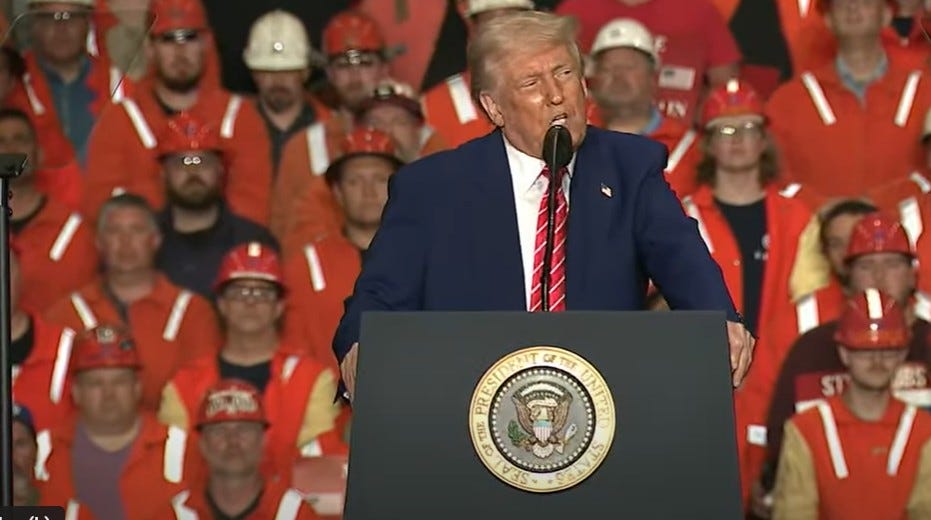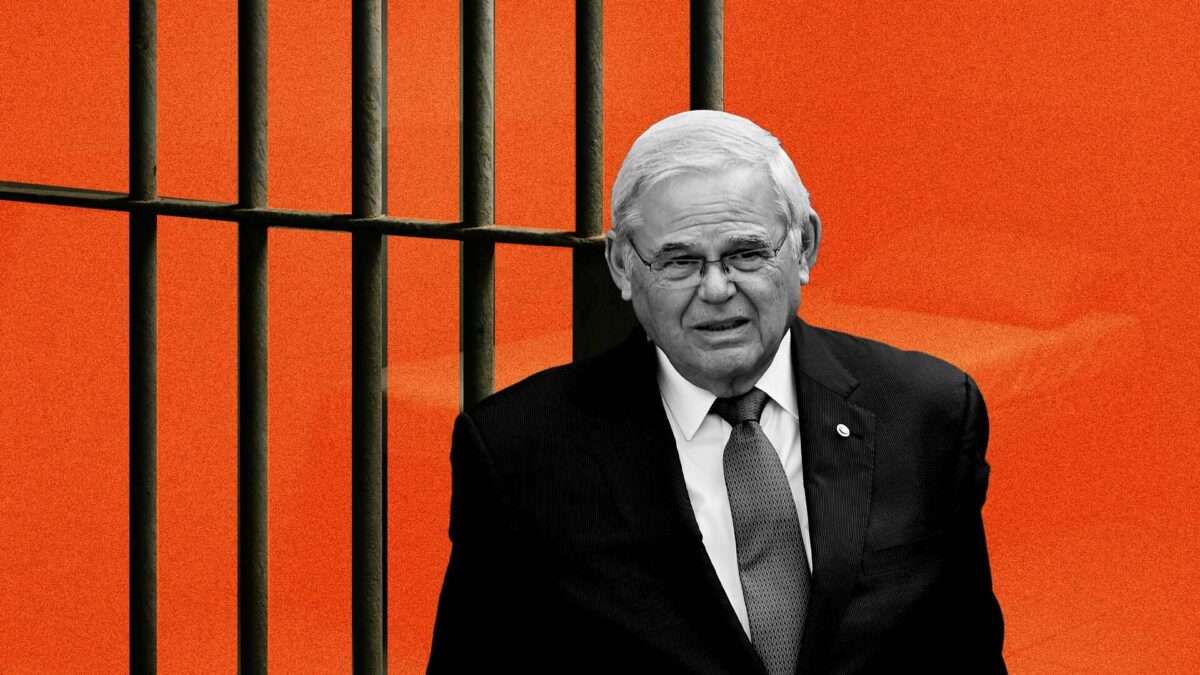
For all the post-mortems on the left, for all the gloating on the right, few have asked one question about the 2024 election: Why did Americans elect a convicted felon over a prosecutor?
The legal system that valorizes prosecutors and demonizes criminals has so delegitimized itself that “prosecutor” and “felon” no longer resonate as “good guy” and “bad guy.” While there are reasons to oppose President Donald Trump, his status as a felon may not be one.
Minorities, particularly Black men, have notoriously been the unjust targets of police, prosecutors, and judges. After the 2020 murder of George Floyd, less than a mile from my home in Minneapolis, we heard the slogan “Defund the Police.” That cry was widely ridiculed (on the right and left).
But when Republicans nominated and the country elected Trump, who demanded that “Republicans in Congress should defund the DOJ and FBI,” the tide turned. When the 47th president nominated an attorney general who promised that “the prosecutors will be prosecuted,” MAGA and Black Lives Matter had something in common.
Progressives and conservatives alike have become fatigued by law enforcement exercising powers arbitrarily and seem to be impervious to sanction. Both sides have called for defunding police that they believe are terrorizing Americans who have done nothing but stand up for their freedoms, even if they disagree about who qualifies. The right identifies the J6 “hostages,” Trump himself, or Maricopa County, Arizona Sheriff Joe Arpaio as police victims. At the same time, the left stands up for Black men or those President Joe Biden granted clemency to on his last day in office—some preemptively, in anticipation of unjustified persecution from the incoming administration.
Distrust of police, prosecutors, and judges, even the system itself, once an accepted fact of life among Black families who gave their children “The Talk,” has become mainstream. When half the country identifies myriad “felons” as heroes (let’s not forget Oliver North and G. Gordon Liddy) and the other half can’t accept that others walked free (Kyle Rittenhouse and George Zimmerman), the system seems arbitrary, not just.
Things change. “Reefer madness” and myths of Black men on marijuana with dangerous urges led to the classification of pot as a Schedule I controlled substance. Now, marijuana possession is legal in half the country, and people can be imprisoned for it in the other half.
Even the definition of self-defense has become ambiguous as political agendas have transformed “the castle doctrine” into “stand your ground” and now, “make my day” laws.
Prosecutors use laws mandating lengthy prison sentences to burnish their bona fides. They often tout 95 percent conviction rates or higher to prove they keep families safe. But they achieve these fantastic results only because, as one federal prosecutor bragged, the prosecution holds “51 cards in a deck when they go to trial.” The judge standing next to him chimed in: “…and the jokers.” The government has access to virtually bottomless resources, with entire police and sheriff’s departments acting as investigators and forensic experts with the title ‘The State’ behind them.
As a result, almost all those indicted end up convicted of something due to a system that can only result in convictions.
Jed Rakoff, a well-respected federal judge, writes, “Our criminal justice system is almost exclusively a system of plea bargaining, negotiated behind closed doors and with no judicial oversight. The outcome is very largely determined by the prosecutor alone.” He explains that sentencing “guidelines, like the mandatory minimums, provide prosecutors with weapons to bludgeon defendants into effectively coerced plea bargains” in an article, later a book, Why the Innocent Plead Guilty.
As a result, the U.S. incarcerates 655 people out of every 100,000. By comparison, the United Kingdom imprisons 140 per 100,000, France and Germany 100 and 75 people per 100,000, respectively.
While 4.4 percent of the world’s population lives in the U. S., 22 percent of the world’s prisoners do.
The American criminal justice system holds almost 2.3 million people in 1,833 state prisons, 110 federal prisons, 1,772 juvenile correctional facilities, 3,134 local jails, 218 immigration detention facilities, and 80 Indian Country jails as well as in military prisons, civil commitment centers, state psychiatric hospitals, and prisons in the U.S. territories.
For comparison, the countries with the most incarcerated people per capita are:
1) United States
2) El Salvador
3) Turkmenistan
4) Thailand
5) Rwanda
Enforcement is Unequal
Who is incarcerated (and who is not) is, in part, a reflection of cultural biases, racism, and classism. “Criminal” and “law-abiding citizen” have much to do with class and race, not just whether one obeys the law.
Look at drug law enforcement. Forty percent of college students admit to using marijuana when and where it was illegal, and nearly one in five use other drugs. But when college students are caught with drugs, they are much more likely to be administratively disciplined than to face legal consequences. The unprivileged committing the same crime (drug possession) accrue criminal records. At any given time, there are approximately a quarter of a million people in jails and prisons for drug possession or sales, the same crime for which those college students are given the collegiate version of a time-out.
One study conducted after four Wesleyan University students were arrested for drug sales found that, in the two most recent years for which data were available, “521 Wesleyan students were referred to campus officials for disciplinary action involving drug use on campus. Only four students were arrested.” Broadening the research to include other elite colleges, the article continues,
At Colgate University, 245 students in [the same two-year period] were referred for disciplinary action for drug abuse violations, and six were arrested. Oberlin College referred 198 students in that same time span, while five were arrested. It’s a similar story at Kenyon College, Reed College, and Occidental College: student arrests were in the single digits; disciplinary referrals were in the hundreds.
A study of hundreds of thousands of cases in Gainesville, home of the University of Florida, found that “college-aged blacks off campus are nine times more likely to be arrested for drugs than their white peers at the university in the same city. “For hard drugs like cocaine, whites and blacks arrested by campus police don’t spend any time behind bars, while college-age blacks busted by city police average 236 days and whites average 76 days.” Both race and status as a college student affect whose lives are knocked off track and who can move on.
Too Many Common Behaviors Are Criminal
Furthermore, it is relatively easy to run afoul of the criminal system without knowing it. Paul Rosenzweig of the Heritage Foundation points out:
[e]stimates of the current size of the body of federal criminal law vary. It has been reported that the Congressional Research Service cannot even count the current number of federal crimes. The American Bar Association reported in 1998 that there were more than 3,300 separate criminal offenses. More than 40 percent of these laws have been enacted in just the past 30 years, scattered in over 50 titles of the United States Code, encompassing roughly 27,000 pages. Worse yet, the statutory code sections often incorporate by reference the provisions and sanctions of administrative regulations promulgated by various regulatory agencies under congressional authorization. Estimates of how many such regulations exist are even less well settled, but the ABA thinks there are ‘[n]early 10,000.’
These estimates are based on the federal criminal code. Immensely more law is codified in those regulations of federal agencies. That federal code, the Code of Federal Regulations, contains ten times as many provisions that can result in imprisonment. Georgetown University Law Professor Rosa Brooks writes, “At the federal level, there are now some three hundred thousand laws whose violation can lead to prison time. . . .”
The Founders anticipated this problem. In the Federalist Papers, “Publius” (probably James Madison) wrote, “[i]t will be of little avail to the people, that the laws are made by men of their own choice, if the laws be so voluminous that they cannot be read, or so incoherent that they cannot be understood; if they be repealed or revised before they are promulgated, or undergo such incessant changes that no man, who knows what the law is to-day, can guess what it will be tomorrow.”
In 1987, Chief Justice William Rehnquist wrote, “In our society, liberty is the norm, and detention before or without trial is the carefully limited exception.” Yet more than three-quarters of a million people languish in jail in the U.S. because a judge has either ordered them held without bail until trial or set bail so high that they can’t afford it. They are deprived of freedom because they have been accused. We punish them first and try them later. As a defense lawyer for over 20 years, I can assure you that preparing to try a criminal case when your client is incarcerated is like running a marathon in a potato sack and blindfolded. Meanwhile, the elite, who can afford a $1 million bail, get released to prepare. The rest accept a plea in exchange for time served.
This dynamic was brilliantly described by an indigent client I represented as a public defender. After explaining her options—take a plea deal or exercise your constitutional right to a trial—I asked if she understood the choices. She said, “Yeah, if I plead guilty, I get to go home.” She succinctly explained what the system has become.
The Prosecutors
Prosecutors could—and should—provide a backstop to the errors that police make. It is the prosecutors who decide whether to charge or not. Prosecutors take the raw material—police reports—and determine whether there is enough evidence to charge a case. They have two considerations. 1) whether there is probable cause, the minimum basis for charging, and 2) whether, maybe with further investigation such as forensic analysis of evidence, there is likely to be enough evidence to prove guilty beyond a reasonable doubt.
But prosecutors are often elected. They face political pressure. Populations swing between “tough on crime” and “progressive” prosecutors, between “broken windows” enforcement and “evidence-based” theories of policing. And when prosecutors push too hard, succumb to political pressure, and commit misconduct to ensure a victory, they are virtually never punished.
The journalist Radley Balko found that,
Study after study, from New York to California, has found that only a tiny number of bad prosecutors ever face discipline. It’s typically less than 1 percent, not of all prosecutors, but less than 1 percent of prosecutors already found by a court to have committed misconduct.
Take the Cutis Flowers cases. American Public Media (APM) produced an 11-part podcast investigating a quadruple murder in Winona, Mississippi, the arrest of Curtis Flowers for the crime, and the six trials that followed. Four of the six trials resulted in guilty verdicts, but the Mississippi Supreme Court overturned three for prosecutorial misconduct (the other two resulted in hung juries). The last trial resulted in a guilty verdict that was appealed and reversed by the U.S. Supreme Court. Two different Supreme Courts (the State of Mississippi and the United States) found that the prosecutor, Doug Evans, not only engaged in prosecutorial misconduct, specifically racial bias in jury selection but that the misconduct was so egregious as to require reversals of convictions for a quadruple murder.
Yet, despite the state supreme court and the U.S. Supreme Court finding four separate times that he engaged in egregious misconduct, for which Curtis Flowers has been in prison for over two decades, Mr. Evans has never spent a day in jail for his behavior. Until he recently retired, he continued to be re-elected even after courts found him to have consistently violated the Constitution.
Don’t trust prosecutors? Don’t believe that “felon” is a definitive assessment of one’s character? There might be a good reason. As a result of this mess of a legal system, the United States has 19 million convicted felons. They all have families. About 100 million Americans are or have family members who are felons. Many justifiably feel that a record is an arbitrary combination of status and circumstances rather than an assessment of character. The pronouncement—There goes a felon—understandably leads to a nationwide shrug.
The post Why Did Americans Elect a Felon Instead of a Prosecutor? appeared first on Washington Monthly.


 1 day ago
7
1 day ago
7 










 Bengali (Bangladesh) ·
Bengali (Bangladesh) ·  English (United States) ·
English (United States) ·